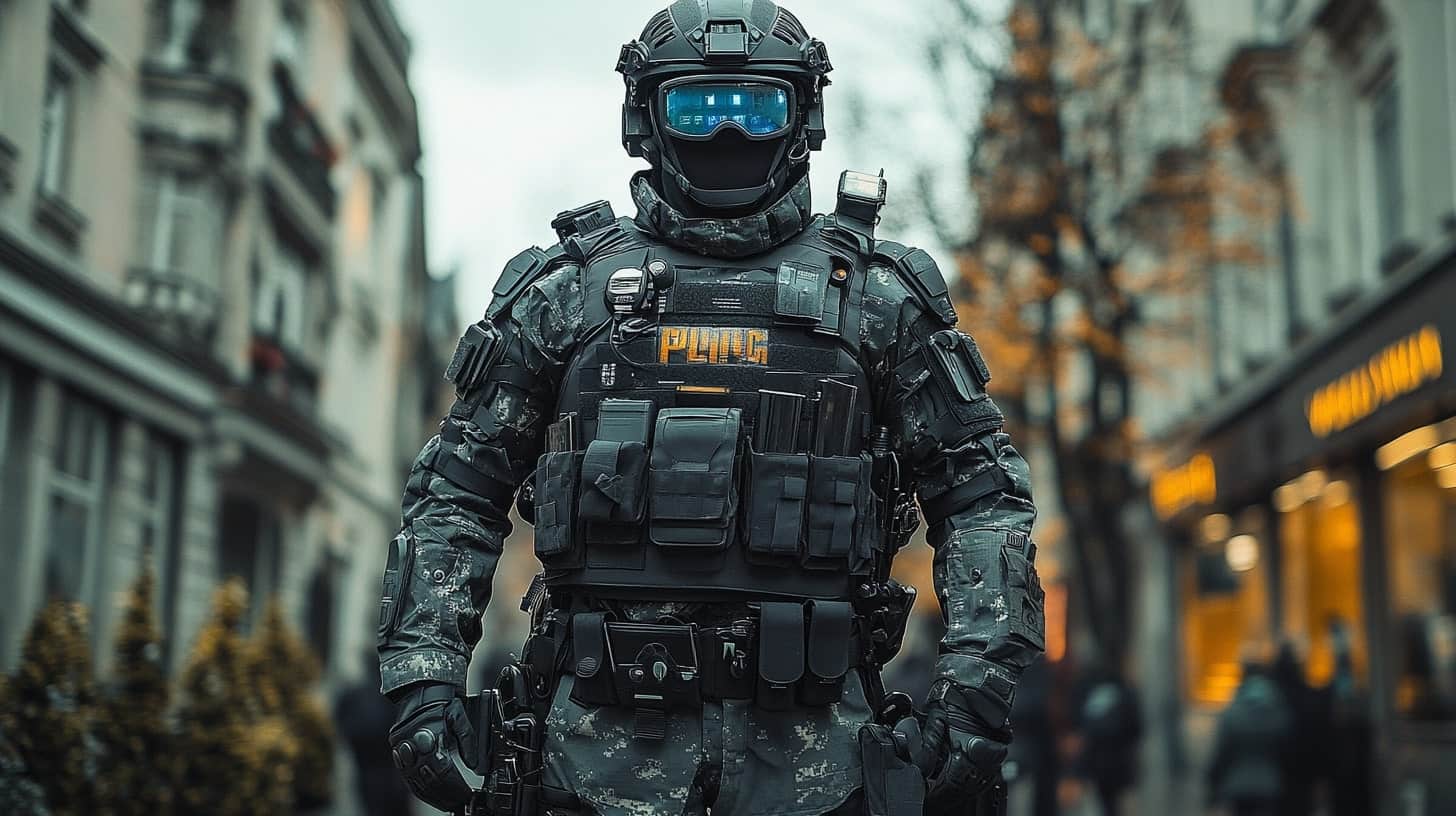As the world grows increasingly complex, so do the challenges faced by law enforcement. Modern-day policing requires a blend of adaptability, technological innovation, and efficiency to address emerging threats while maintaining public trust. From wearable tech to advanced weaponry, the future of police equipment promises a transformative leap forward, reshaping how officers protect and serve.
In this article, we’ll explore how emerging technologies could redefine police uniforms, communication systems, non-lethal weaponry, and transportation, ensuring officers are better equipped to handle the demands of modern society.
1. Advanced Uniforms: Smart and Protective
The traditional police uniform is set for a revolutionary upgrade. The integration of advanced materials and wearable technology will make future uniforms smarter and safer.
Smart Fabrics: Lightweight, breathable materials capable of monitoring vital signs, such as heart rate and stress levels, are becoming a reality. These uniforms could alert officers and command centers to physical distress or injury in real-time, enabling faster medical intervention.
Integrated Body Armor: Future uniforms may feature seamlessly embedded body armor made from graphene or other advanced materials. These offer superior protection against firearms and sharp objects without compromising mobility or comfort.
Environmental Adaptability: Uniforms could also adapt to various environmental conditions, such as extreme heat or cold, using temperature-regulating fabrics. For officers working in urban or hazardous environments, built-in filtration systems could shield against air pollutants or chemical exposure.
2. Enhanced Communication Systems
Communication is a cornerstone of effective policing, and emerging technologies will enhance how officers stay connected in the field.
Augmented Reality (AR) Helmets: AR-equipped helmets or visors could provide officers with critical information in real-time. For instance, facial recognition software could identify individuals, display criminal records, or highlight potential threats.
Next-Gen Radios: Future radios may rely on 5G networks, ensuring crystal-clear communication even in remote areas. These devices could integrate GPS tracking, biometrics, and secure encryption to enhance operational coordination.
AI-Driven Assistance: Artificial intelligence could assist officers by analyzing data streams and offering actionable insights. For example, AI systems could monitor public surveillance feeds, identifying suspicious activities and alerting officers in the vicinity.
3. Non-Lethal Weaponry
As public demand for safer policing increases, non-lethal weaponry is expected to become more advanced and widely adopted.
Energy-Based Weapons: Taser technology will evolve to include longer ranges and more precise targeting, minimizing collateral harm. Directed energy weapons, such as sonic disruptors, could incapacitate individuals without lasting physical damage.
Adhesive Projectiles: Future tools may include devices that immobilize suspects by deploying adhesive substances or nets, reducing the need for physical confrontation.
Pepper Ball Drones: Miniature drones equipped with non-lethal deterrents, like pepper spray or tear gas, could offer officers a safer means to disperse crowds or manage volatile situations.
4. Improved Mobility and Transportation
The vehicles used by law enforcement are set to undergo significant changes, driven by the need for speed, durability, and environmental sustainability.
Electric and Autonomous Vehicles: Electric patrol cars are already becoming more common, but future iterations could include autonomous technology, allowing officers to focus on their duties rather than driving. These vehicles might also feature advanced surveillance equipment, such as 360-degree cameras and real-time data links.
Drone Support Units: Drones will play a larger role in reconnaissance, search-and-rescue missions, and traffic monitoring. Equipped with thermal imaging and long-range communication systems, drones can access areas that are difficult or dangerous for officers to reach.
Motorized Exoskeletons: For officers on foot, exoskeleton technology could provide enhanced strength and endurance, enabling them to carry heavy loads or respond more effectively in physically demanding scenarios.
5. Data-Driven Policing
The future of law enforcement will rely heavily on data collection and analysis to predict and prevent crimes.
Predictive Analytics: Advanced algorithms will analyze historical data and real-time inputs to predict where crimes are most likely to occur. This will allow officers to allocate resources more effectively and proactively address issues.
Biometric Scanning: Handheld devices capable of instant fingerprint, iris, or facial recognition scans could streamline suspect identification. This would reduce the time spent on administrative tasks and enhance operational efficiency.
Blockchain Technology: Blockchain could provide a tamper-proof system for storing evidence, ensuring chain-of-custody integrity and reducing the risk of legal disputes over evidence handling.
6. Community Engagement Tools
Future police equipment won’t just focus on enforcement—it will also aim to strengthen ties between officers and the communities they serve.
Virtual Reality Training: Officers could use VR simulations to practice de-escalation techniques and improve cultural sensitivity, fostering more positive interactions with the public.
Transparent Surveillance: Body cameras with live-streaming capabilities and automatic transcription could provide transparency and accountability during interactions with citizens.
Mobile App Integration: Police departments might develop apps that allow citizens to report incidents, request assistance, or access crime statistics in their area. These tools could foster collaboration and trust between communities and law enforcement.
Challenges and Ethical Considerations
While technological advancements offer numerous benefits, they also raise ethical and logistical concerns. The use of biometric data, predictive analytics, and AI systems must be balanced with privacy protections to prevent misuse. Training officers to use these tools effectively will also be critical, ensuring that technology enhances their abilities rather than replacing human judgment.
Conclusion
The future of police equipment is a fascinating glimpse into how technology will redefine law enforcement. Advanced uniforms, smarter communication systems, non-lethal weaponry, and data-driven tools will empower officers to perform their duties more safely and effectively. However, integrating these advancements will require careful planning, ethical considerations, and collaboration between law enforcement agencies and technology developers.
As we look ahead, one thing is clear: the evolution of police equipment will play a pivotal role in shaping a safer and more efficient future for both officers and the communities they serve.


